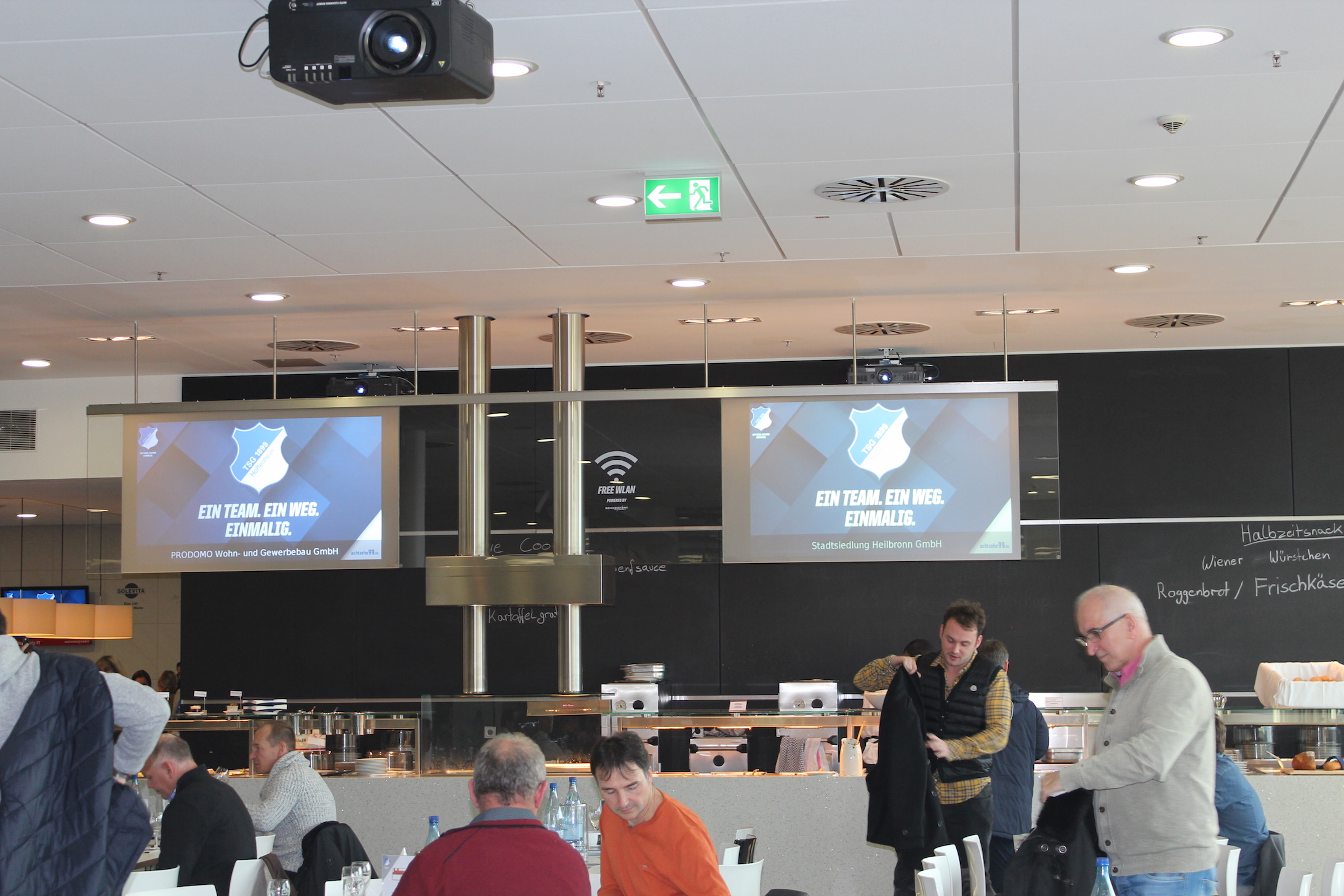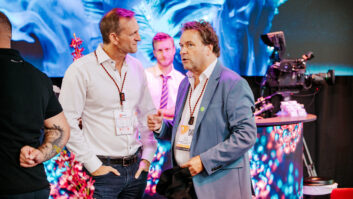
Previously we looked at the escalating functionality of the modern stadium and the new innovations driving fan engagement. Here we discuss the importance of fast and reliable Wi-Fi connectivity throughout and the requirements for external broadcast operations.
The other primary concern regarding connectivity is, of course, individual user access to the internet during the event itself. As an integral part of the smart stadium experience, visitors now expect to be able to view high-resolution content, in real time, as the match or other sports event proceeds. Correspondingly, broadcasters are keen to feed this appetite – and augment their advertising revenues – by providing access to immediate replays of key moments in the game, as well as specially created content such as player interviews and highlights packages derived from previous matches.
All of this calls for extremely robust bandwidth throughout the stadium, so it’s no surprise to discover that many owners and operators are currently investing in boosting their Wi-Fi connectivity. The extent to which they have got to grips with this requirement as of mid-2018 is generally felt to be decidedly variable, but it’s only likely to become more acute as 5G networks roll out and expectations of uninterrupted video quality are raised even further.
“A lack of connectivity will reflect poorly on the experience and be a major hurdle in retaining fan attendance”
“Connectivity is of paramount importance,” confirms Pete Egart – vice president EMEA at Daktronics. “Fans expect to be able to share their experiences on social media platforms throughout their time at the venue, [and] a lack of connectivity will reflect poorly on the experience and be a major hurdle in retaining fan attendance. Maintaining bandwidth for Wi-Fi and cellular communications is a challenge in a stadium or arena environment due to the proliferation of technology, which can include a combination of large video displays, ribbon displays, pitch perimeter displays, LCD networks, concourse displays, exterior displays, wayfinding displays, and both wired and wireless broadcasting equipment.”
In combination, these different systems can “put out a large volume of electromagnetic interference [EMI], which can impede network performance and ultimately cause a negative effect on the fan experience. In stadium and arena environments, venues can work to minimise the effect of EMI by working with long-standing, reliable suppliers and by choosing products that offer lower EMI emissions.”
Although the quality of the individual mobiles and tablets on which stadium visitors are viewing content is obviously beyond the control of the venues, owners and operators can ensure that the main displays deliver the highest-resolution images possible. Increasingly, this is prompting upgrades from HD to 4K, while even higher-resolution formats – notably 8K – cannot be too far away, although resolution is by no means the only concern here.
“Resolution in a display is important, and many stadiums have shown a desire to hit certain resolutions [such as HD and 4K],” says Egart. “Resolution in a stadium is not always the best measurement for determining the display technology and what will provide the best value and fan experience. To choose the ‘best display’, the stadium should consider minimum viewing distance, maximum viewing distance, viewing angles, exposure to direct sunlight, and a host of other variables.”
Production principles
For those stadiums that are regularly descended upon by broadcasters to produce coverage of major tournaments and championships, it stands to reason that accommodating their needs is another crucial ingredient of the smart stadium. As far as outside broadcast operations go, that includes not just sufficient room and connectivity provision in the grounds to house OB trucks, but increasingly space within the venues for what are called flyaways.
To save money spent on personnel and resources, more and more broadcasters and OB companies are exploring the concept of remote production, whereby various key parts of the production process for traditional linear or online content can be kept back at the studio. This may negate the need for an OB truck on site as such, instead allowing only the equipment that is needed to be set up at the venue – often in a quiet spare area of the stadium. This also has the pleasing knock-on effect of allowing other equipment and personnel to be allocated to other projects where they may be needed more urgently.
Quite apart from external broadcast provision, there is also the issue of the stadiums generating their own content. For some this involves calling on the services of a company like ADI.tv, which has a long track record in providing programming that is managed and delivered directly from its own production galleries. Others may seek to take on the responsibility themselves, although this is likely to involve a significant initial outlay to cover a production system, multiple cameras, wireless audio equipment and more, as well as several members of staff with the necessary skills to create content that at least bears reasonable comparison to its ‘professionally’ produced equivalent.
James Keen – group marketing manager of Tripleplay, confirms that, as one might expect, the extent to which in-house content production is adopted is determined by factors such as the club’s position in its league and the general state of its finances. “There are some venues that have the capacity to invest in their own production suites and make sure that people are as engaged as they can be from the moment they enter the stadium [with a variety of content],” he says. “But then there are those at the other end of the scale where the budgets are much smaller and there is less money around to be invested.”
However, an increasing number of more attractively priced production systems are now available – NewTek, Grass Valley and Blackmagic Design are among the manufacturers to have recently brought popular mid-level systems to market – so it is surely only a matter of time before a majority of venues have at least some internal production capacity.
Meanwhile, there is a more mixed outlook for some other emerging technologies. Several contributors referred to their awareness of current trials involving robotics, although at present no one seems quite sure how these applications might be monetised in the long term. There is, however, slightly more confidence around the subject of virtual reality. At one level this might involve a new addition to VIP suites, whereby visitors can enjoy a VR experience related to the event in question using goggles and pre-recorded footage; your present correspondent can testify to the immersive feel of some of these experiences, having tested several at major sports venues during the last 12 months.
Then there are other applications, as summarised by Egart: “Virtual reality is currently being used as a sales tool for season ticket sales and for selling advertising spots throughout the stadium. VR is also being used in broadcast analysis of the event, allowing broadcasters to be inserted into the action and explain what is happening and/or what should have happened during the action.”
These are transitory times, then, for the modern sports stadium, but what all of the new technologies have in common – from enhanced Wi-Fi capacity to 4K screens and VR – is that they are set to bring sports fans even closer to the action. The upshot is it won’t be too long before they are able to access content anywhere, anytime in the stadium, ensuring that their match-day experience is dynamic and compelling from the moment they enter the venue to the moment they depart.







